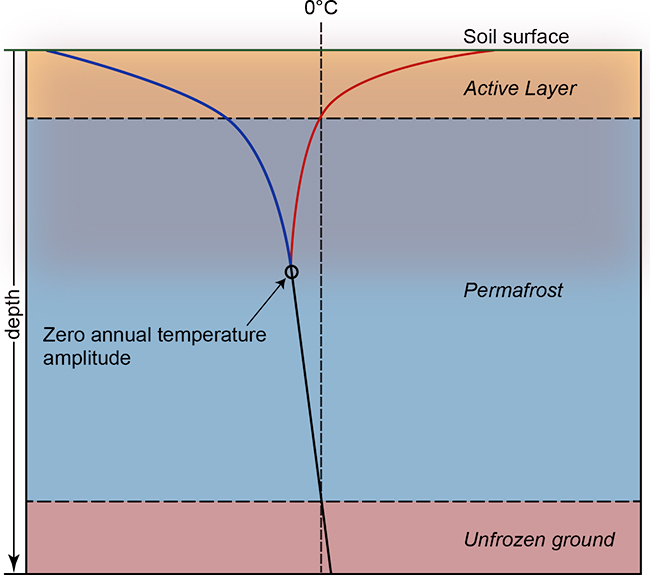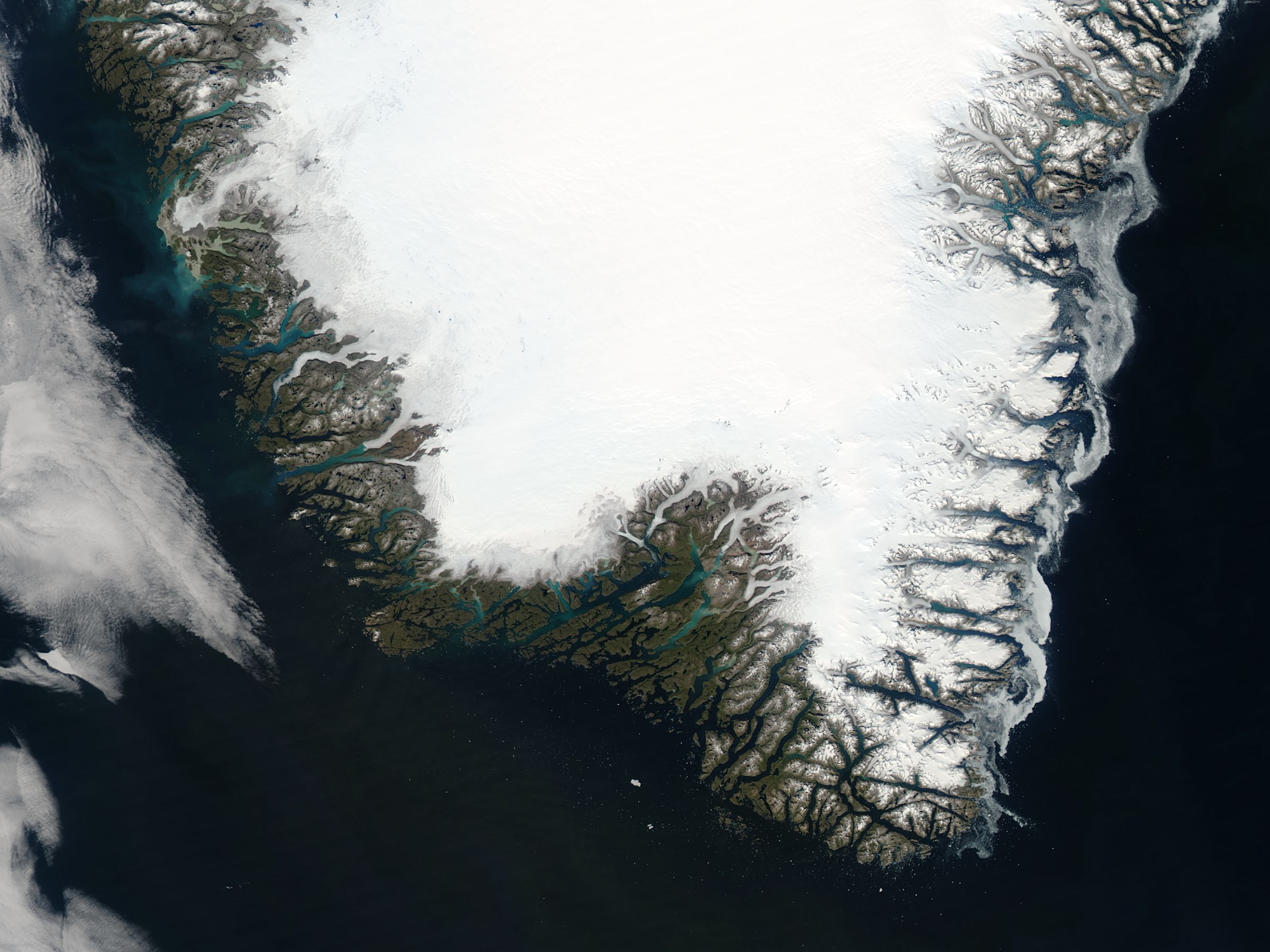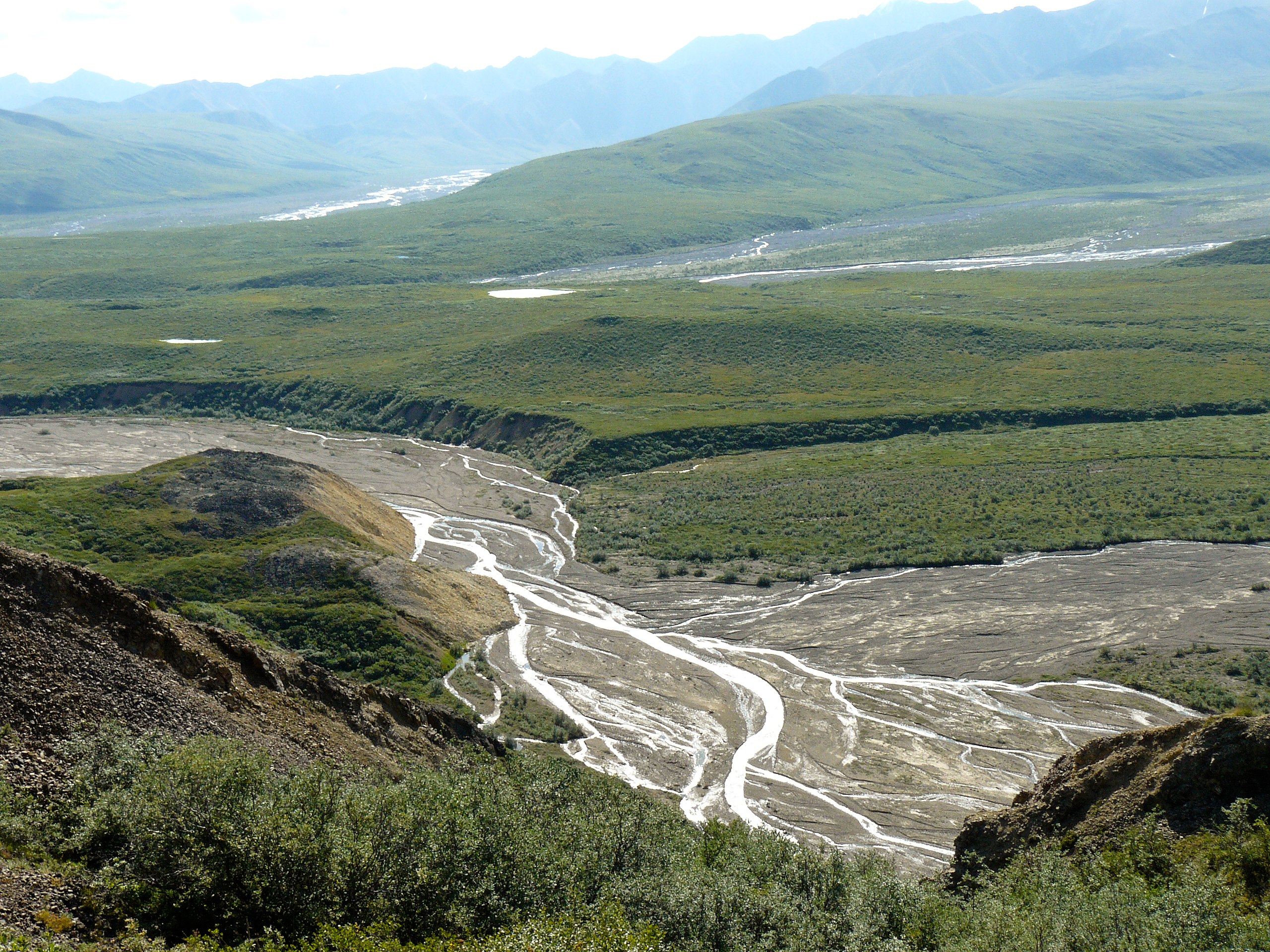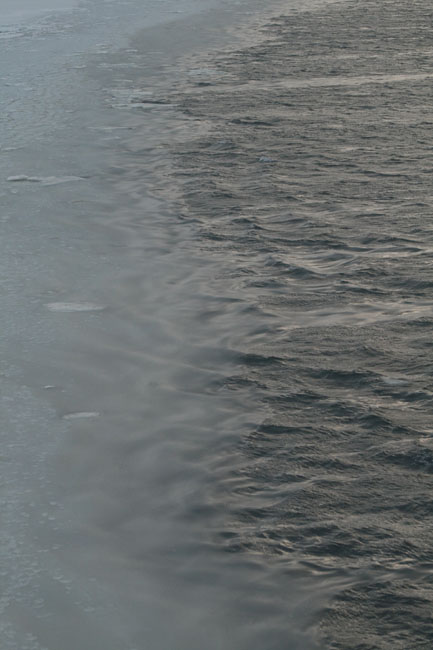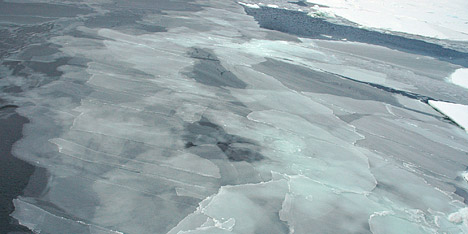Cryosphere & Climate
Week
GEOS 3410
Week Schedule
Tuesday
- Wrap-up oxygen isotopes
- Ice…
- …on land
- …on water
Thursday
-
Please bring a computer
- Wrap-up ice
- Environmental records in ice (isotopes strike back!)
- Ice & paleoclimate activity
Outside of class
- Week reading (Canvas)
- Wrap up ice & paleoclimate activity
- Term paper outline [Nov. 1]
Permafrost
Permafrost
Frozen soil
| Active layer | thaws seasonally |
|---|---|
| Permafrost | perenially frozen |
| Ice wedge | pure ice zones |
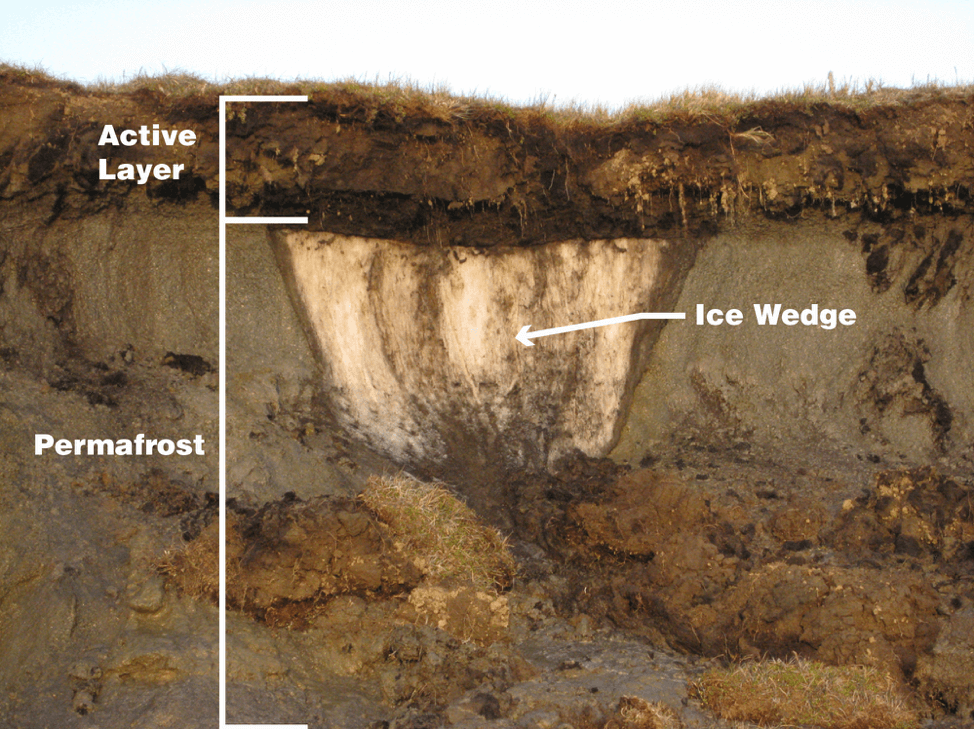
Permafrost
Frozen soil
| Active layer | thaws seasonally |
|---|---|
| Permafrost | perenially frozen |
| Ice wedge | pure ice zones |
Permafrost

Most permafrost is in the Northern Hemisphere


Permafrost and methane (CH4)
Methanogensis in wetlands (permafrost is basically frozen wetland)
- High water table (flooded)
- High flux of organic material
- Waterlogged soils → anoxia
- Methanogenesis requires anaerobic conditions
- Org-C → CH4 + energy
Permafrost and methane (CH4)
- Permafrost methane release slows after first few decades
- Mature bogs (like permafrost!) become fairly minor methane sources

Permafrost and methane (CH4)
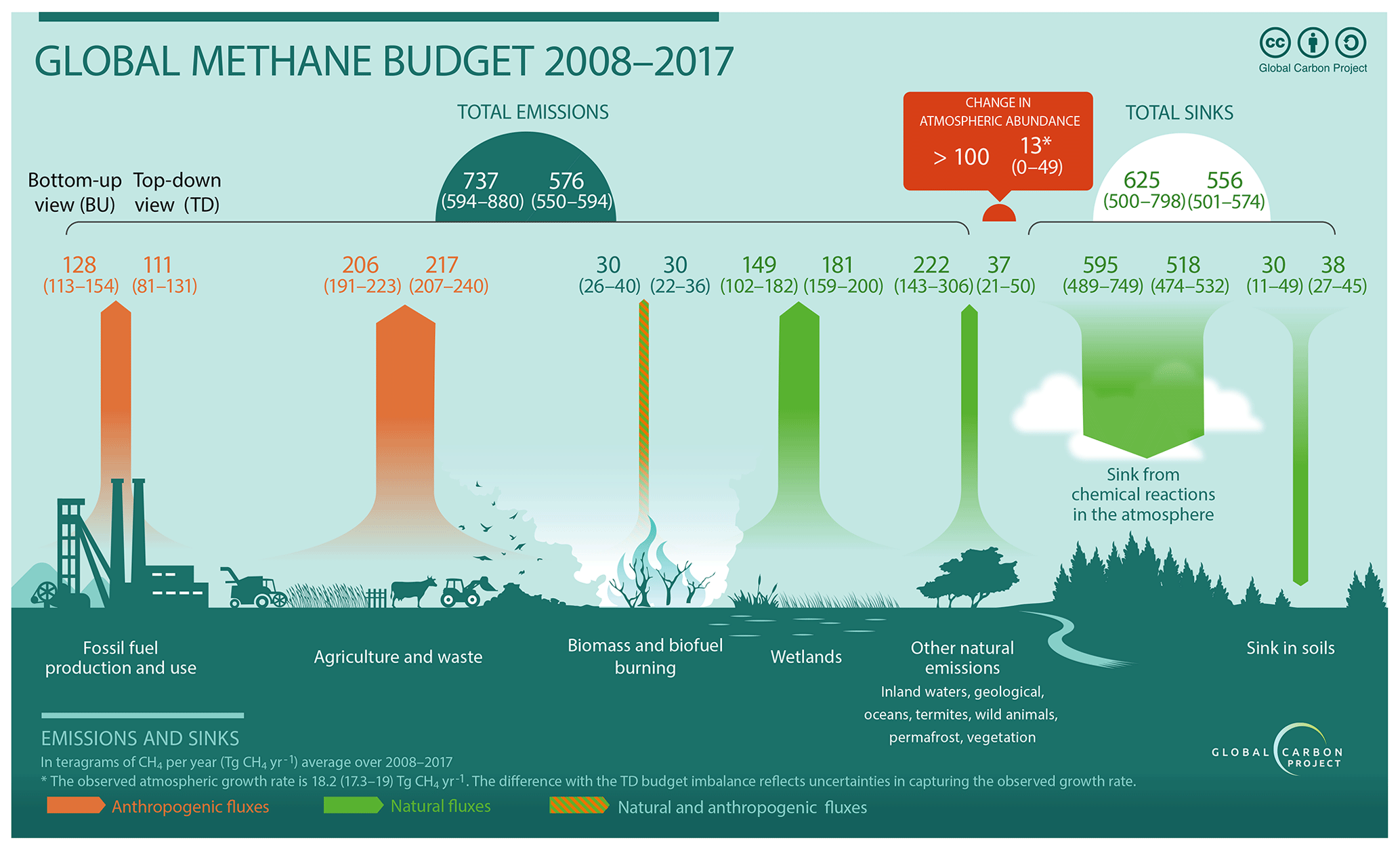
Permafrost degradation is still bad…
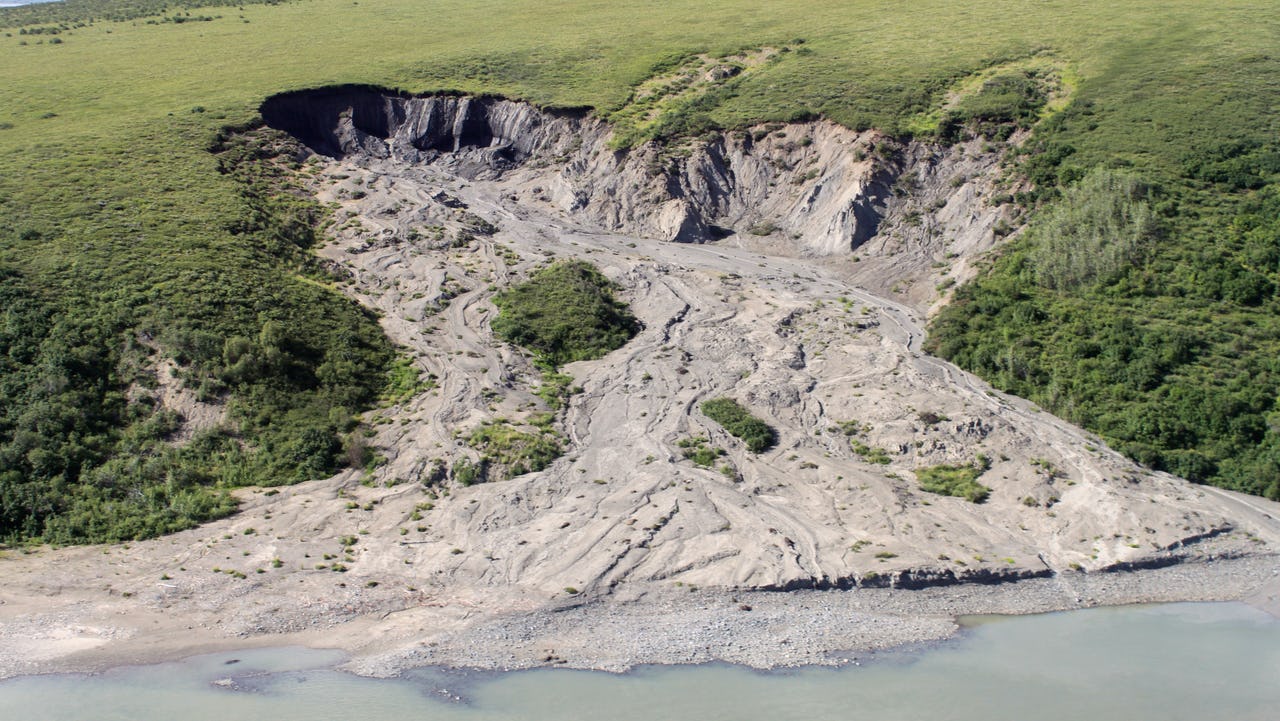
Glaciers
Glaciers
A perennial body of crystalline ice (& rock) that flows under its own weight.
Water ice
Flow in crystaline ice
3 main types of glaciers
Mountain glacier
Topographically constrained
Glacial mass balance
Glaciers reflect the balance between
- Accumulation (snow)
- Ablation (melting)
Equilibrium line altitude (ELA): accumulation = ablation = 0.
Internal deformation ± basal sliding
Sliding beneath occurs when the base is lubricated- Liquid water at the base
- Soft, deformable sedimentary bed

On top of the glacier: firn

Glaciers have bubbly ice
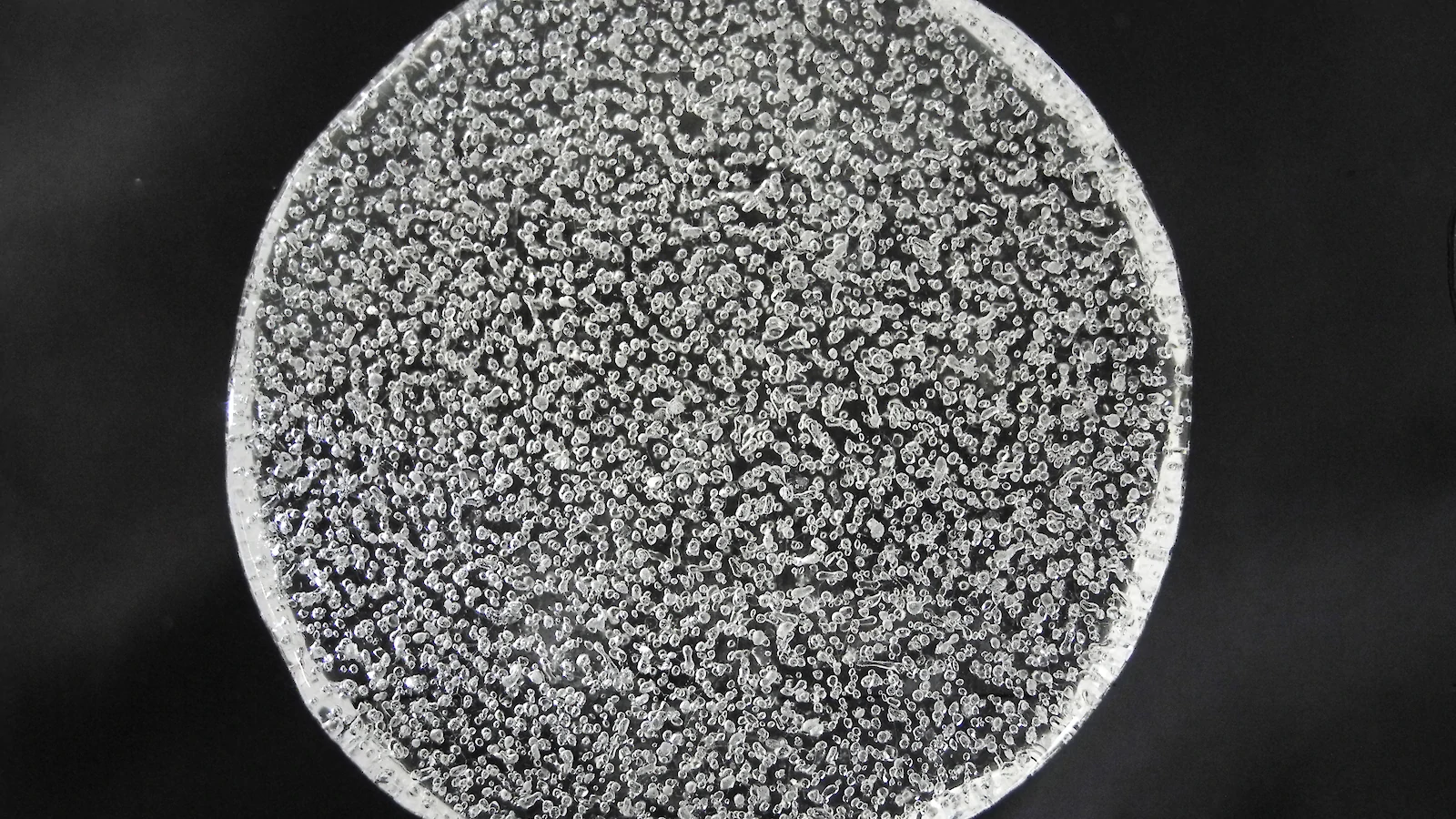
Beneath the glacier: erosion generates till
Abrasion: grinding bedrock with rock entrained in ice
Plucking: ice/water exploits bedrock cracks → coarse chunks of rock
Moraine: a large pile of till at a glacier's edge

Glacial periods are dusty
- Glaciers and ice sheets generate sediment-choked braided rivers
- Glacial periods are stormier, drier, windier.
- Strong winds blow dust over great distances.
Loess deposits: glacial windblown silts

Last glacial maximum (LGM)
Last glacial maximum
Larger ice masses, lower sea levels
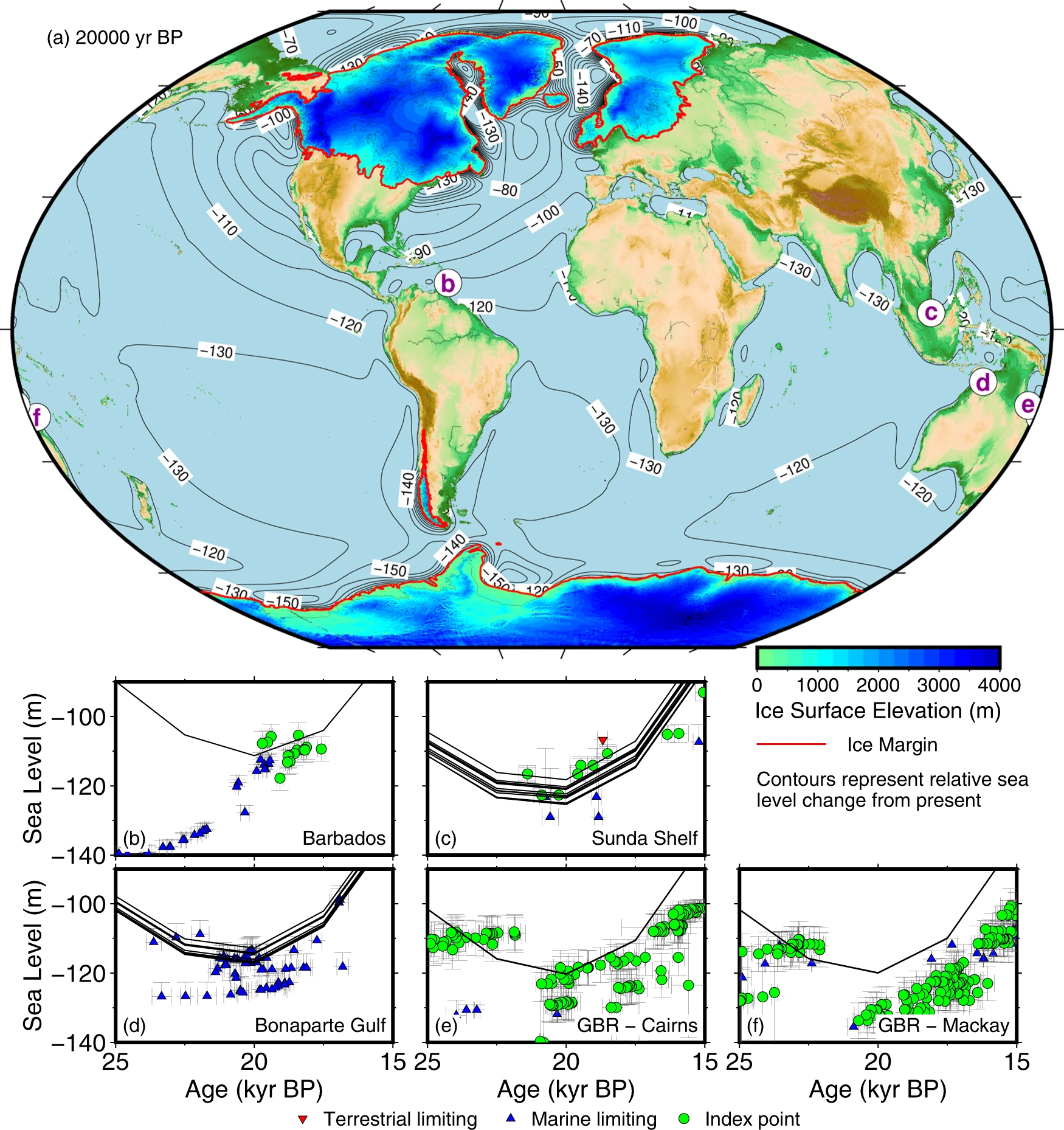
Glacial Isostatic Adjustment (GIA)
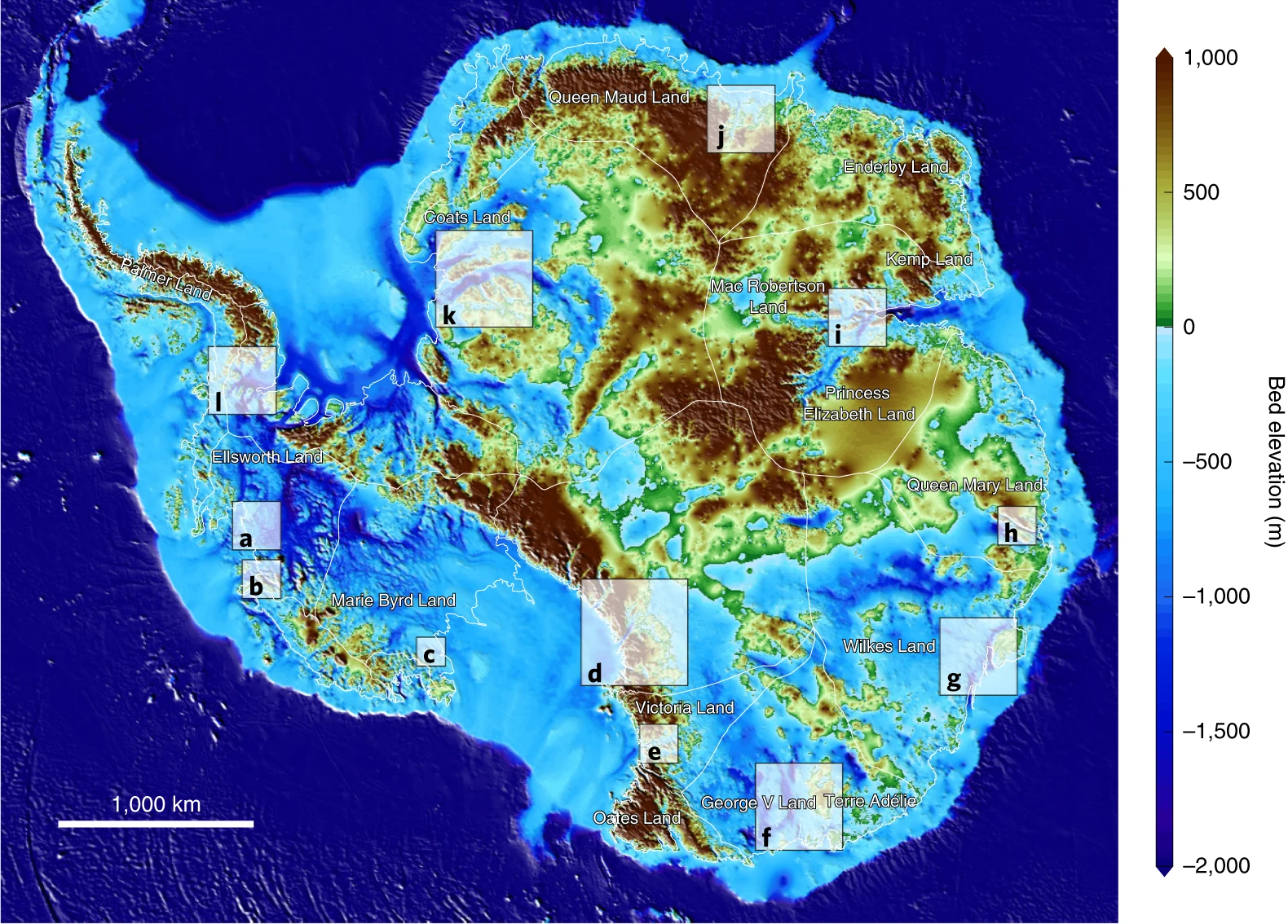
LGM sea ice extents
Several models, including Pre-Industrial (PI, left). LGM → a lot more sea ice.
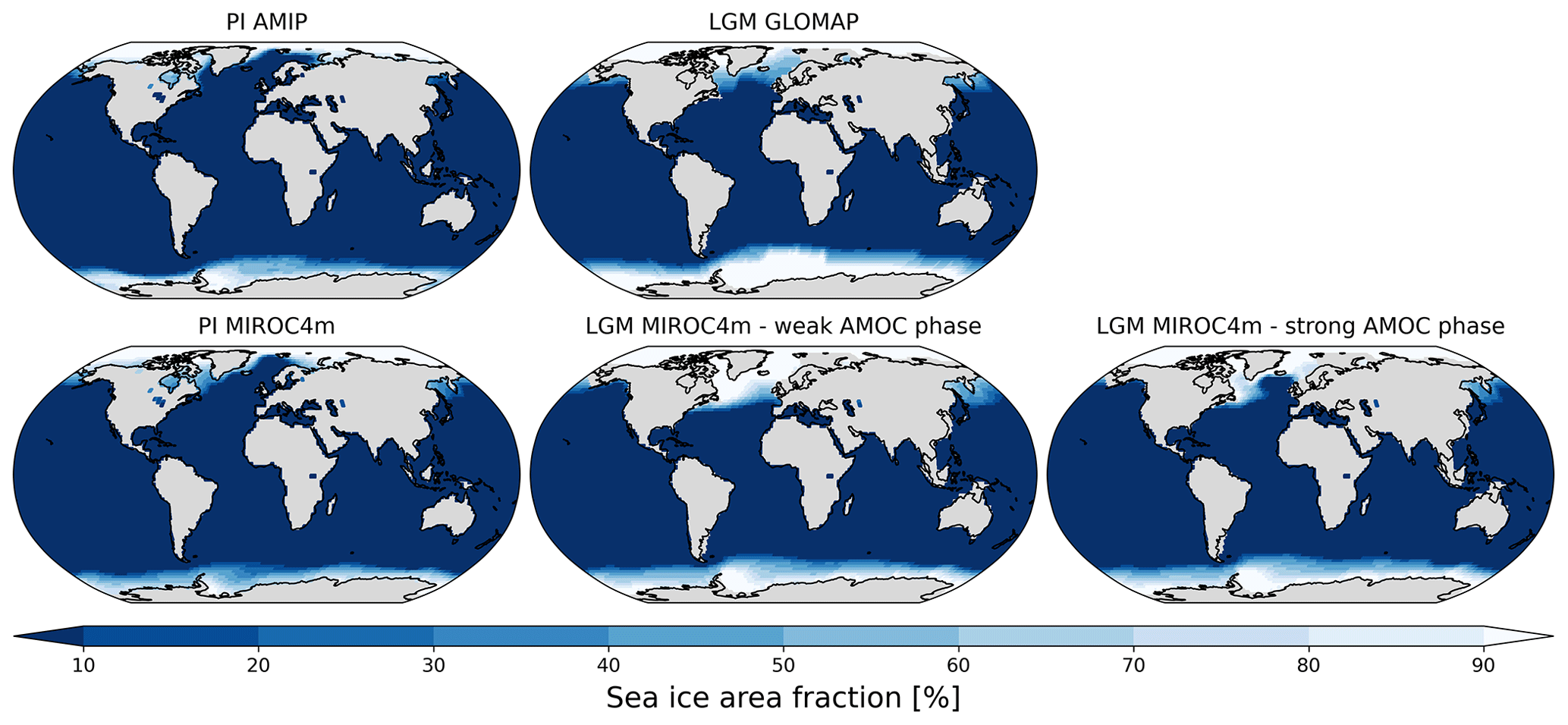
Ice shelves
Ice shelves – the floating limbs of ice sheets
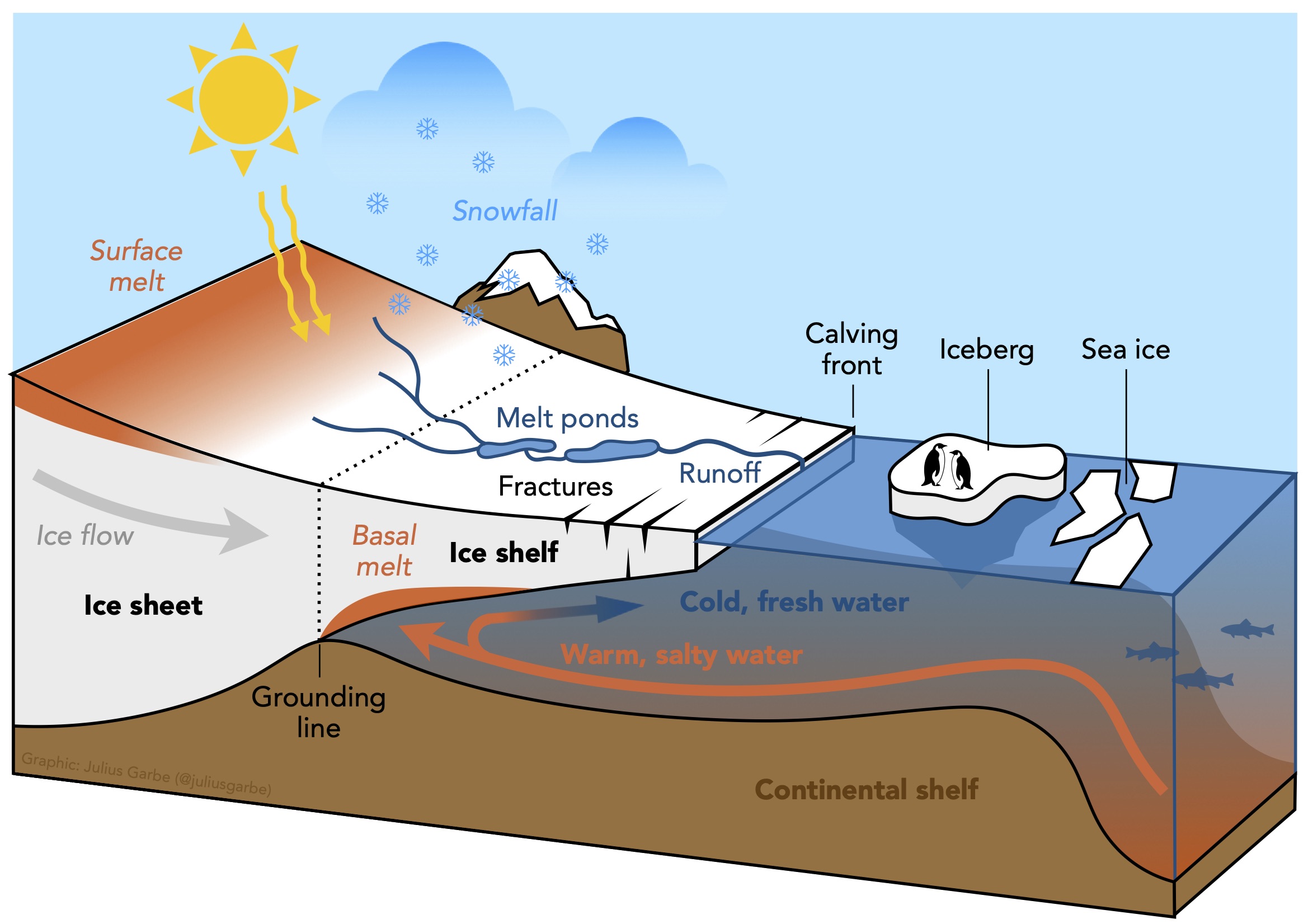
Icebergs

Petermann Glacier, northern Greenland (NASA)
Importance of ice shelves
- Buttressing: the shelf pushes back on the glacier and slows it down.
- Ice shelf/cliff instabilities — runaway collapse from…
- Marine ice shelf instability: water penetrating a retrograde slope
- Marine ice cliff instability: oversteep ice cliffs collapse

Ice shelves & ice streams

Ice streams
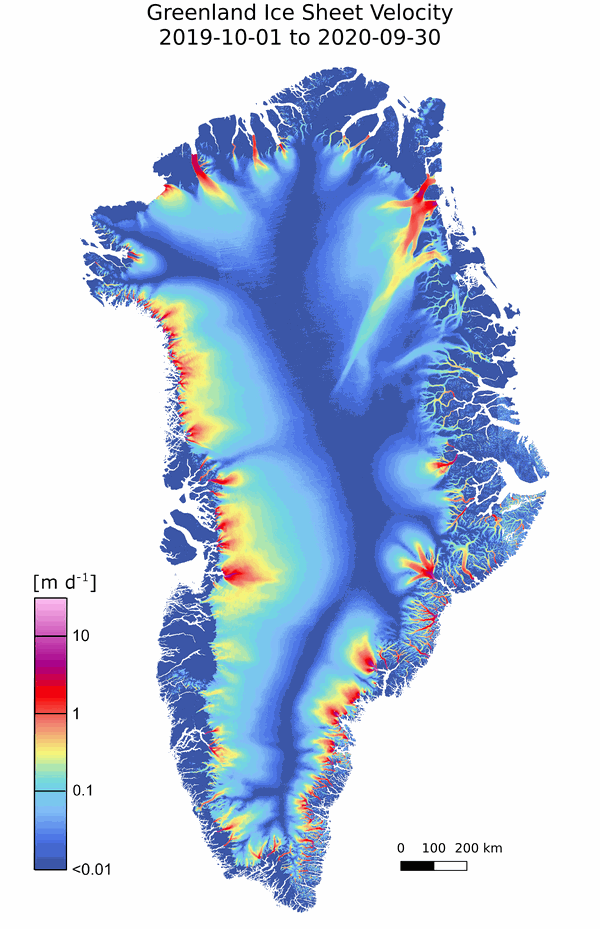
- Channels of very fast moving ice (meters/day)
- Drain majority of ice sheet volume
- Discussion: What is the relationship between ice streams, ice shelves, and ice sheet mass balance?
Climate Data Store
Sea ice
Sea ice
Multi-year ice (aka "old ice") is multiple years old.
First year ice is ≤ 1 year old.
Sea ice
Fast ice is "landfast" — anchored to the shore, forms with tides.
Drift ice (pack ice) is free-floating.
Drift ice forms in leads
Thick multi-year ice splits apart to form leads, where new ice begins to form on the open water.
Analogous to tectonic divergent margins
Polynya: persistent open water
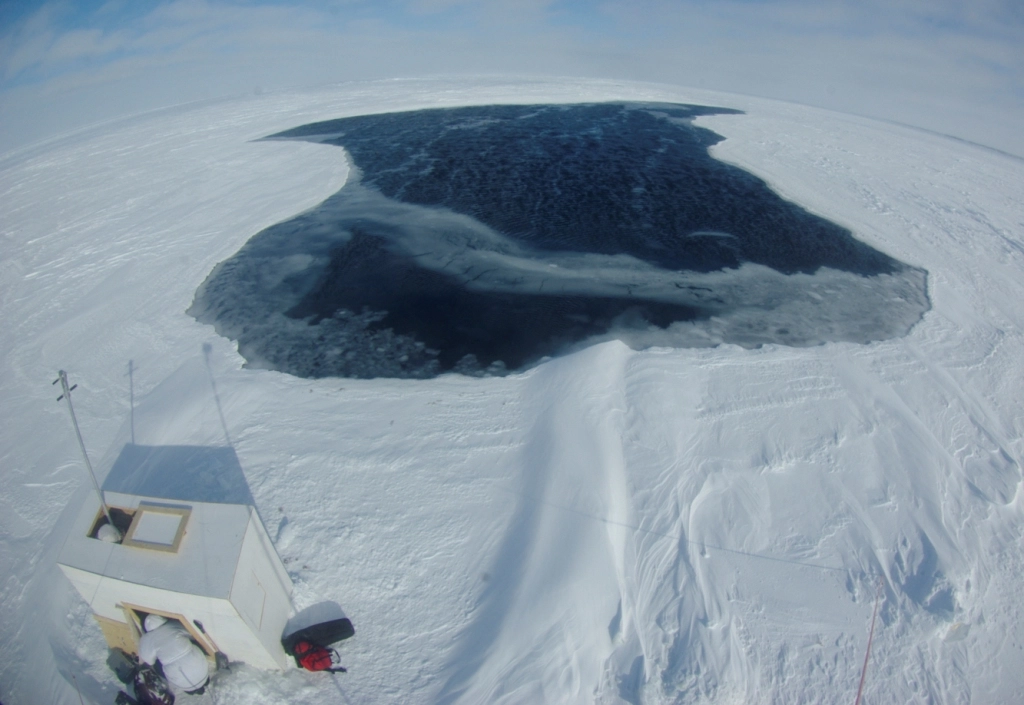
Young / first-year ice
During the first and following years, sea ice thickens by…
Pressure ridge
| Total thickness | Sail (mean) | Keel (mean) |
|---|---|---|
| 5–30 m | ≤ 2 m | 4.5 m |
Analogous to tectonic convergent margins
Ice floes: loose multi-year ice

As these drift out from the polar regions, they eventually melt.
Seasonal sea ice
Two hemispheres, two seasons!
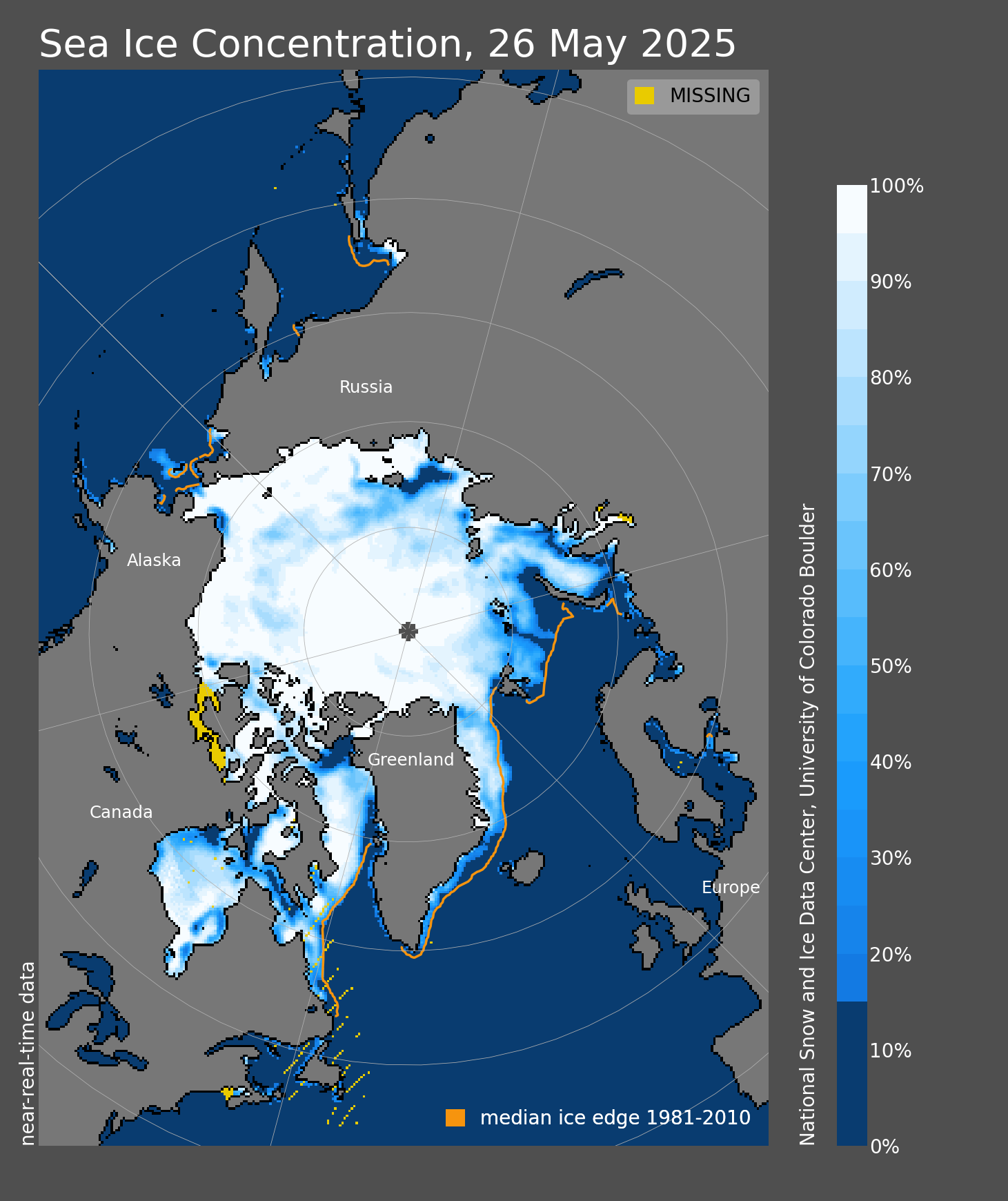
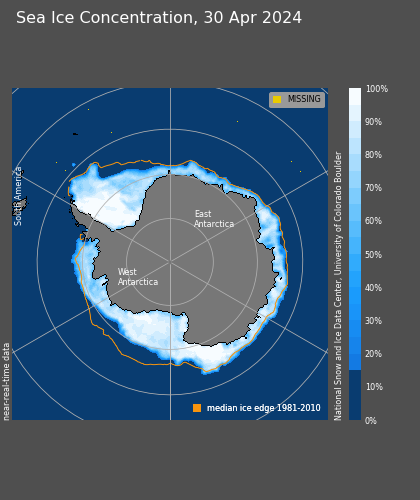
Sea ice grows/shrinks quickly. Why?

Sea ice in a changing climate
What melts more easily, first-year or old ice?
How might this set up a feedback in a warming climate?
Climate records in ice
Antarctic ice core sites
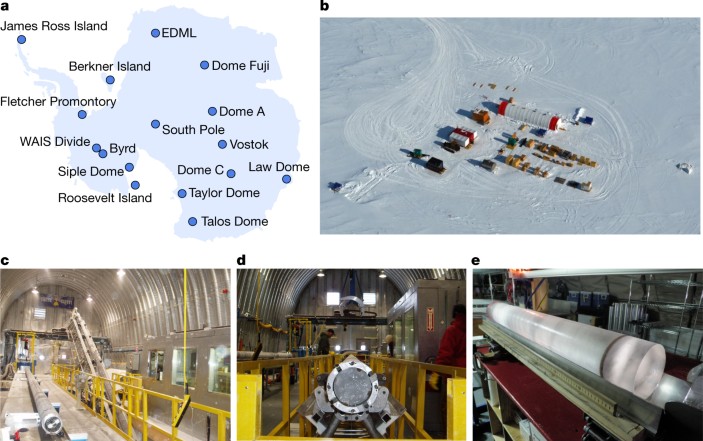
Greenland ice core sites
| NEEM | North Greenland Eemian Ice Drilling | 2009 |
|---|---|---|
| NGRIP | North Greenland Ice Core Project | 1999 |
| GRIP | Greenland Ice Core Project | 1990 |
| GISP(2) | Greenland Ice Sheet Project | 1971 |
Annual layers
Light (↓) and dark layers. What do they represent?
Annual layers
A person examining layers from individual storm events in a snow pit.

Why are annual layers in the snow/firn thicker than in the underlying ice?
Ice chronology
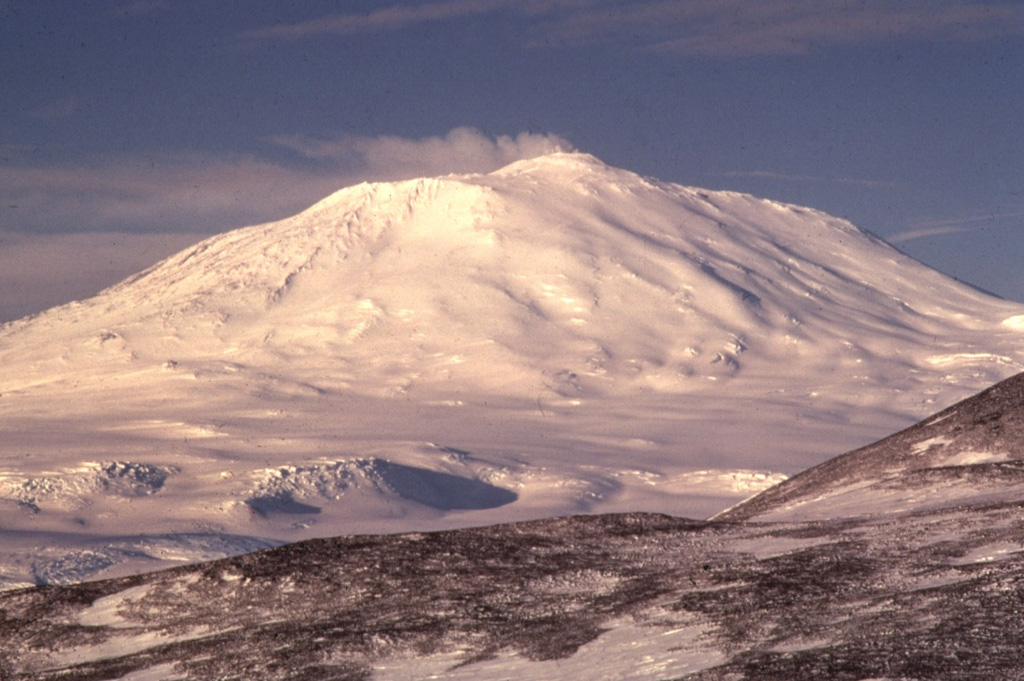
Oxygen isotopes in water ice
Light isotopes travel further inland.
Preferentialy condense/freeze heavy isotopes → snow

Oxygen & hydrogen isotopes in water ice

Atmospheric gas stored in bubbles

Gas ages vs. water (ice) ages
Snow → Firn → Ice
Gas ages ≈ water (ice) ages
(within uncertainty)
- Historical thought— gas 102–103 y younger than ice.
- Better firn compaction models → gas mostly stays put.
Vostok Ice Core

Interpreting Vostok ice core data
| # | Suggested Team Name | Compare δD to… |
|---|---|---|
| 1 | Feisty Forams | Benthic δ18O |
| 2 | Loess Lovers | Ice core dust |
| 3 | Swamp Squad | Ice core CH4 |
| 4 | Carbonic Crew | Ice core CO2 |
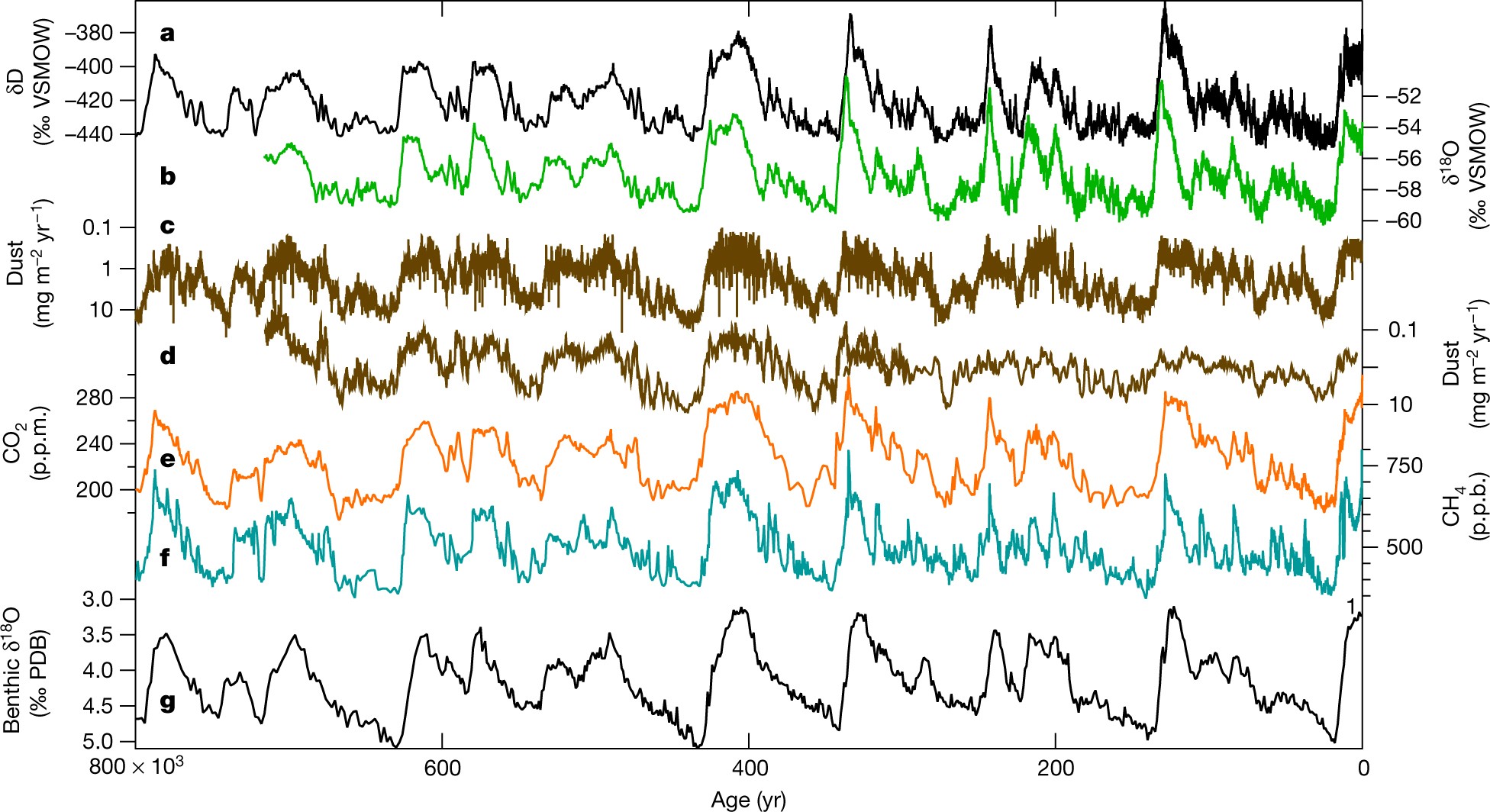
Ocean-atmosphere-cryosphere-hydrosphere-biosphere
connections
And this holds up on shorter timescales!
Ice sheets across hemispheres (70–20 ka)
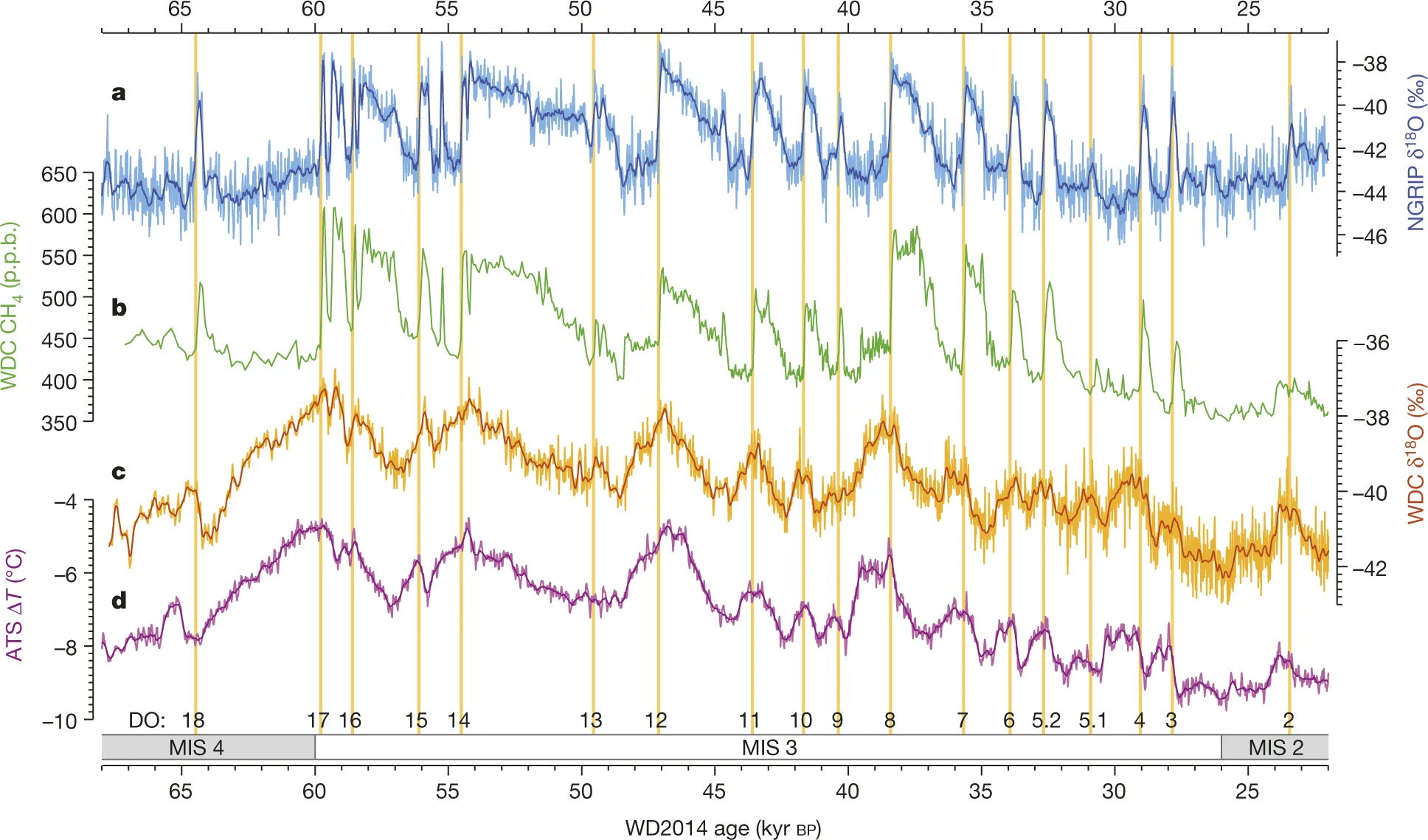
Ice sheets across hemispheres
Zoom in on the timing.

Ice sheets across hemispheres
N & S nearly in-phase
Greenland always warms/cools ∼200 years before Antarctica.
An interhemispheric change…
…with a ∼200-year lag.

Polar See-saw
Brought to you by Thermohaline Circulation
Next Week ()
- Week reading (syllabus)
- Tuesday: Deep time climate history
- Thursday: Less deep time climate history
- Term paper outline [Nov. 1]
